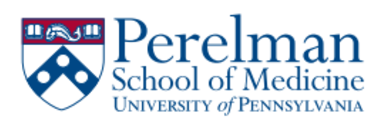Opening the morning at our 2019 Research Day were three faculty talks on highly influential work. Karen Glanz, PhD, MPH (epidemiology) confronted crucial questions about our food and nutrition environments. Mingyao Li, PhD (biostatistics) shared her unique methods for single-cell analysis, which reveal the types of cells implicated in a whole range of human diseases. Dokyoon Kim, PhD (new to our informatics faculty) illustrated how data integration can advance translational research. View six highlights from these talks below.
Despite the popularity of the term “food desert,” a 2015 systematic review of the literature found little relationship between a neighborhood’s food environment and obesity rates among its people. When a supermarket was introduced in an area where fast food had dominated, often people bought junk food in the supermarket. So George A. Weiss University Professor Karen Glanz, PhD, MPH, and her team decided to take a different tack.
Research on the influence of various food environments has been mixed. Philadelphia’s Healthy Corner Stores initiative saw little change in food purchases. Obama-era efforts in schools showed some positive effects but none sufficient to change policies. Still, Dr. Glanz charged the audience, perhaps we should see access to healthy food as everyone’s right.
A central problem in translational research is that it’s difficult to understand the genetic architecture of a complex disease. Many genome-wide association studies (GWAS) exist—but most of the genetic loci that have been identified have negligible effects: Heritability, in many cases, isn’t found. That’s why we need alternative strategies to find underlying disease causes, said Assistant Professor of Informatics Dokyoon Kim, PhD—and a systems genomics approach, using data integration, can get the job done.
With the traditional approach, you can analyze a beautiful multi-omics data set, Dr. Kim continued—but you must handle the associations one pair at a time. So he asked himself: Can I integrate everything into one mathematical model to predict outcome or explain disease phenotype?
Every cell contains the same DNA—but in each, only certain genes are expressed at same time. Traditionally we study this phenomenon using bulk RNA sequencing, but that approach doesn’t yield the highest resolution—or the clearest results. That’s why Professor of Biostatistics Mingyao Li, PhD, decided to devote herself to sequencing single cells—a field only 10 years old that was named Science magazine’s 2018 technology Breakthrough of the Year.
With the techniques her team has developed, they can transfer any given piece of learning for single-cell clustering into a different but related problem. Dr. Li and her team are taking aim at a huge range of diseases, from Alzheimer’s to Age-Related Macular Degeneration.

